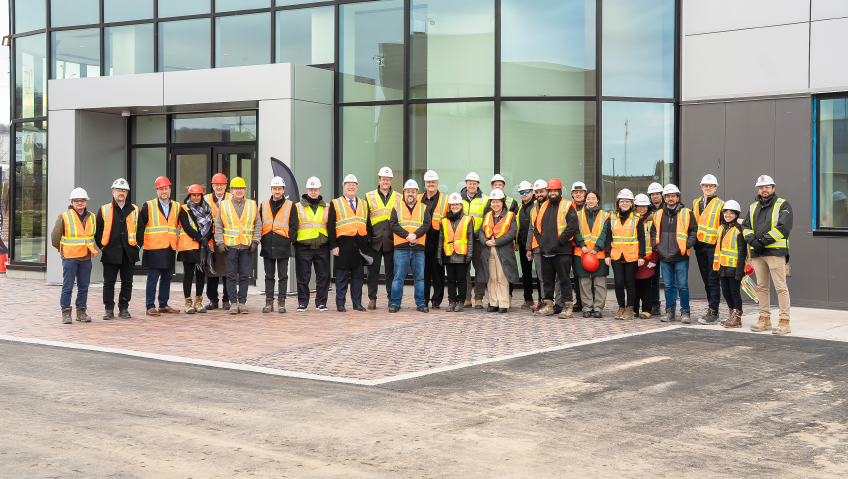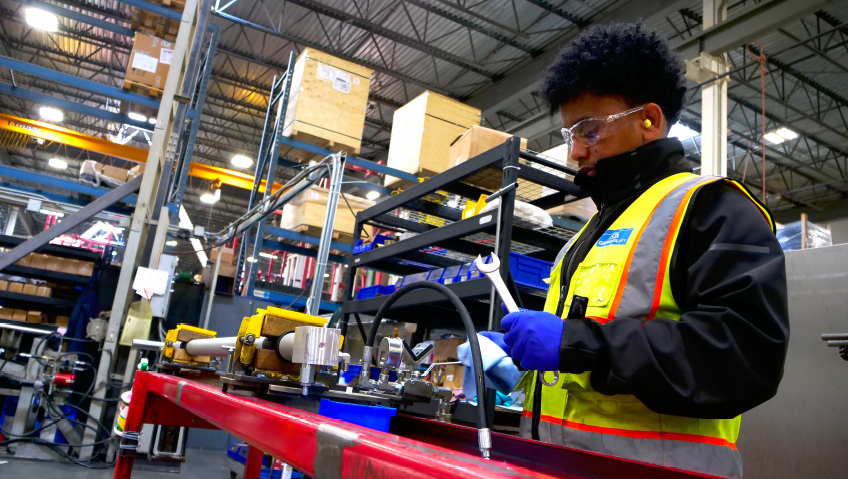The Centre for Commercialization of Regenerative Medicine (CCRM), established in 2011, was into its second decade of business when it officially spun off its subsidiary Omniabio Inc.: a technology-driven cell and gene therapy contract development and manufacturing organization (CDMO). Since its launch in 2022, OmniaBio has managed to successfully come into its own as a fully realized company and it is Canada’s first commercial-scale CDMO dedicated to cell and gene therapies.
Conceived by CCRM as an ecosystem building strategy, combining manufacturing with access to capital and venture development, OmniaBio has spent the last year building greater capacity and capability. The proof of that effort is the October 2024 opening of a 120,000 square-foot plant in Hamilton, Ontario, to manufacture products for cell and gene therapies. The expectation is that this will be one of the most advanced biomanufacturing facilities in the world.
CCRM President and Chief Executive Officer Michael May says that CCRM is striving to be a global leader at the leading edge of cell and gene therapy, which represents the future of medicine. CCRM wants to “replicate what we’ve done in Canada with like-minded partners worldwide and facilitate a global collaboration between several CCRM hubs.” The introduction of CCRM Nordic last year in Sweden is a major step toward realizing a global network of commercialization hubs, coordinated from a headquarters in Canada that will ensure all hubs work together, synergistically, and that Canada benefits from its leadership.
While the goal is a considerable one in terms of size and effort, CCRM is confident that it can be achieved.
OmniaBio is an important part of this global hub strategy, particularly when it comes to enabling manufacturing capability and its critical role in establishing a sustainable ecosystem. The goal is to grow both CCRM and OmniaBio together into global players.
OmniaBio President and Chief Executive Officer Mitchel Sivilotti says that his organization will serve late-stage manufacturing in North America with differentiated capability and service offerings, aligning with CCRM’s global hubs to provide additional synergies. This is especially pertinent because the cell and gene therapy market is global, requiring creative solutions to complex manufacturing, logistic, and supply chain challenges.
“The gatekeeper to success in developing novel cell and gene therapies is manufacturability,” says May. Businesses succeed or fail on the back of their ability to make complex, living therapies in a robust and scalable way. This creates what Sivilotti says is a kind of churn—an ecosystem that leverages manufacturing capability into new companies that are developing faster and with more capital, which, in turn, will create future customers for OmniaBio. Tackling development gaps and creating a robust sustainable manufacturing pipeline is how CCRM and OmniaBio are working together.
A further collaboration between the two organizations saw the debut of LineaBio Inc. in July of this year. LineaBio will seek to develop and market critical source material for cell therapies through the launch of off-the-shelf induced pluripotent stem cell (iPSC) lines. Having these ready-to-use lines, which are Good Manufacturing Practices-compliant, will support domestic and international cell therapy developers by accelerating manufacturing timelines by > 12 months and reducing cell line development costs by up to 60 percent. In addition, these cell lines will be among the highest quality available in the industry.
May says that it has been a challenging couple of years for the cell and gene therapy industry. Access to capital for emerging companies has been limited, and the public markets in biotech are still recovering. He says, however, that the tide is turning, and both company development and the industry at large are improving. It is now a great time for emerging companies and scaling companies to access the capabilities of CCRM and OmniaBio.
Sivilotti says that sales pipelines are improving, but he predicts that growth and development will look different than it did before. Increased development and availability of advanced therapies in the market will lead to therapies that are more affordable and efficacious, which will drive further innovation in the industry.
Despite the economic downturn, CCRM and OmniaBio are attracting biotech and large pharma companies looking for late-stage manufacturing while they continue to support companies needing process development, analytical development, and clinical manufacturing. The OmniaBio facility, at McMaster Innovation Park in Hamilton, is the final destination of a “lifelong” engagement of these ventures in Toronto, Hamilton, and across the evolving global network.
May says that, when the regenerative medicine sector had more access to capital a few years ago, many companies invested in their own manufacturing before achieving pre-clinical data. Most of those companies are now trying to sell their unused facilities to pay for clinical development. “CDMOs like OmniaBio are the best way to mitigate manufacturing risk at early and late stages of development and even when products are approved for market,” says May.
The Canadian government has made significant investments into biomanufacturing this past year, particularly through grants to academia. CCRM is working diligently with several organizations to ensure that a collaborative, coordinated strategy emerges that leverages both government and private sector support, and the capability of CCRM/OmniaBio, which sits at the interface between both worlds.
CCRM looks forward to announcing the launch of new global hubs and several new companies this year, at the same time that OmniaBio plans to announce several strategic partnerships. Both are eager to see more risk capital enter the global markets, catalyzing further development of advanced therapies and a greater demand for biomanufacturing. To meet these demands, CCRM and OmniaBio continue to invest in developing innovative manufacturing technology platforms. In particular, OmniaBio is incorporating robotics and AI in its workflow to address market challenges and the high cost of cell and gene therapy manufacturing. These innovations will ultimately help to get lifesaving therapies into the hands of patients who urgently need them. The company is excited to launch its new Hamilton commercial site and onboard its first commercial customer with a ribbon-cutting and opening ceremony scheduled for October 17.
Through the ups and downs of catalyzing an industry at the frontier of medicine, CCRM and OmniaBio always keep today’s patient in mind. Both companies endeavour to continually emphasize the human end user of the therapies and treatments in all their current operations and future plans.






